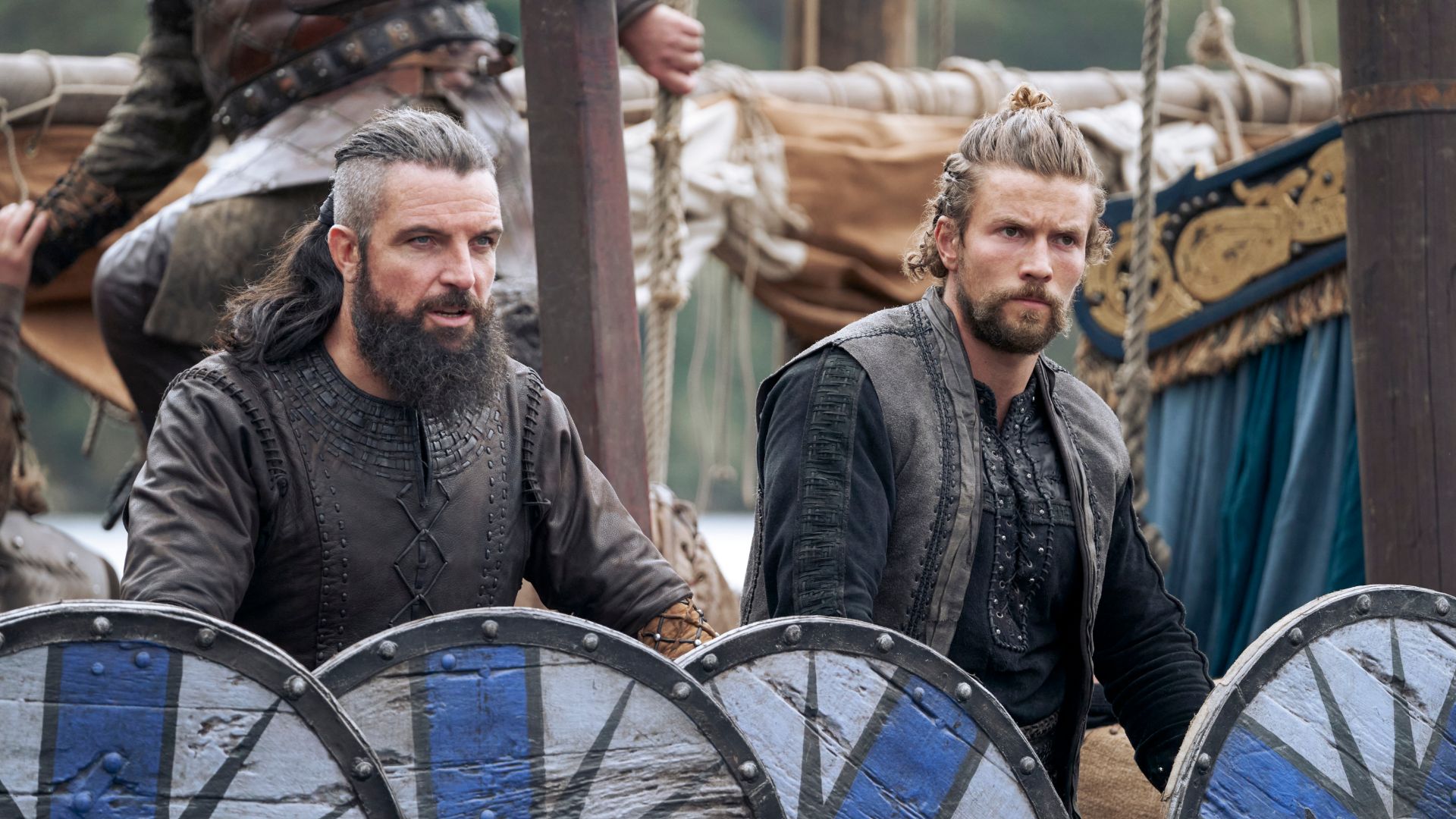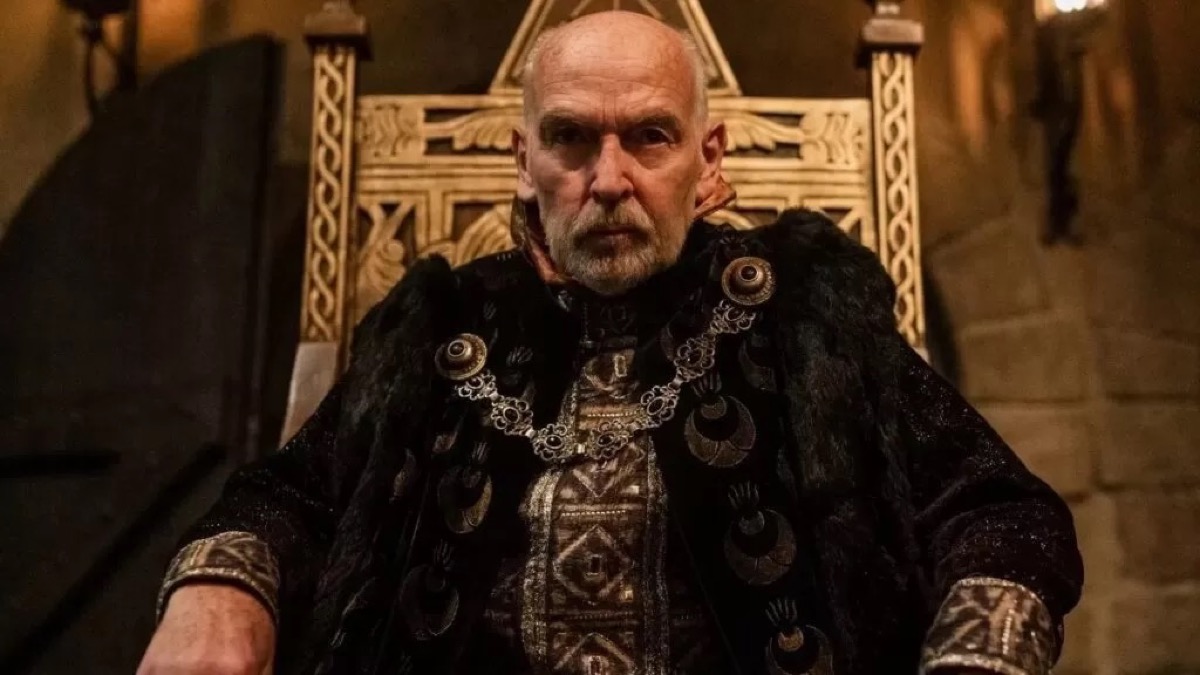Yes, the St. Brice’s Day Massacre in Vikings: Valhalla Really Happened

Wow, the first episode of Vikings: Valhalla was a lot to take in—I mean, in a good way! But it was still a lot of violence, a lot of heartbreak, and a lot of death and destruction. I guess when you turn on a show about Vikings with the warrior afterlife mentioned right in the title, you should be prepared for some heavy subject matter. However, there’s a lot of fascinating history in that first episode, too: characters based on real people, rival factions and religious persecution, and even the influential but little known St. Brice’s Day Massacre.
In the first scene of episode 1, Prince Harald (Leo Suter) and the members of a Viking settlement are celebrating St. Brice’s Day, a feast day on November 13 that commemorates the Bishop of Tours. Amidst the feasting, Harald’s brother is called away to London to visit King Aethelred (Bosco Hogan) at his court. Once there, Aethelred invites him and the other Vikings to sit and eat, but then announces that he’s exterminating all Vikings in England. The prince and his entourage are all killed at the table, and the show cuts to shots of Viking villages all over England’s Danelaw, where women and children are slaughtered by English forces. This event becomes known as the St. Brice’s Day Massacre.
A Little Backstory: Viking Settlements and the Danelaw
The islands that comprise the modern day United Kingdom have been the site of numerous wars and disputes for much of recorded history. One of these conflicts was between the Vikings and the Anglo-Saxons, who spent several hundred years vying for control of modern day Britain. For centuries, the Vikings laid siege to England’s coast, and by the Middle Ages, they controlled a sizable portion of the country, with territories stretching from London almost all the way north to Durham in Northumbria. This land was called the Danelaw, meaning the territories conquered and ruled by the Danes. In 886, the Danelaw was formalized in a treaty negotiated between Alfred, King of Wessex, and Guthrum, the Danish king of East Anglia.
King Aethelred II and Viking Raids
Despite the treaty, England was still buffeted by Viking raids, which increased significantly in the late 10th century. King Aethelred II, whose reign was dominated by England’s struggles against the Danes, tried to keep the peace by paying increasingly burdensome tributes called the Danegeld to the Danish king. He also attempted to unify the Vikings and the Anglo-Saxons by marrying Emma of Normandy.

However, in the long run, his efforts didn’t have the desired effect, and the raids continued. Aethelred was warned by his advisors that the Vikings’ violence would only increase until they killed him and took over his kingdom. Aethelred finally ordered the execution of all Danes living in England in 1002. Many of the English seemed to readily support the order, having endured years of Danish attacks. However, Aethelred’s order also earned him the epithet Aethelred the Unready, which, in modern English, means Aethelred the Poorly Counseled.
The St. Brice’s Day Massacre
Exact details surrounding the massacre are slim, but here’s what historians do know: The Danelaw was too large for Aethelred to kill literally every single Viking on English soil, but there were English attacks on Danish border settlements. For example, one burial site at St. John’s College at Oxford was discovered in 2008, containing the bodies of at least 35 Vikings. Many of the bodies appeared to have been attacked from behind. We also know that Gunhilde, sister of the Danish king Sweyn Forkbeard, died in one of the attacks.
In 1004, Aethelred wrote a royal charter justifying the massacre, claiming that the Danes had sprouted in England “like cockle amongst the wheat” and “were to be destroyed by a most just extermination.” If you’ve watched any Vikings: Valhalla, you’ll recall that Aethelred says that very line about the cockles to Harald’s brother just before he has the Vikings killed. The royal charter that the historical Aethelred wrote also justified the destruction and rebuilding of St. Frideswide’s Church, stating that English forces had burned the church down because Danes had attempted to hide inside.
Ultimately, the St. Brice’s Day massacre only served to exacerbate tensions between the Norse and the Anglo-Saxons even more, as we’ve already seen in Vikings: Valhalla. All 8 episodes of Vikings: Valhalla are currently streaming on Netflix.
(Images: Netflix)
Have a tip we should know? [email protected]
